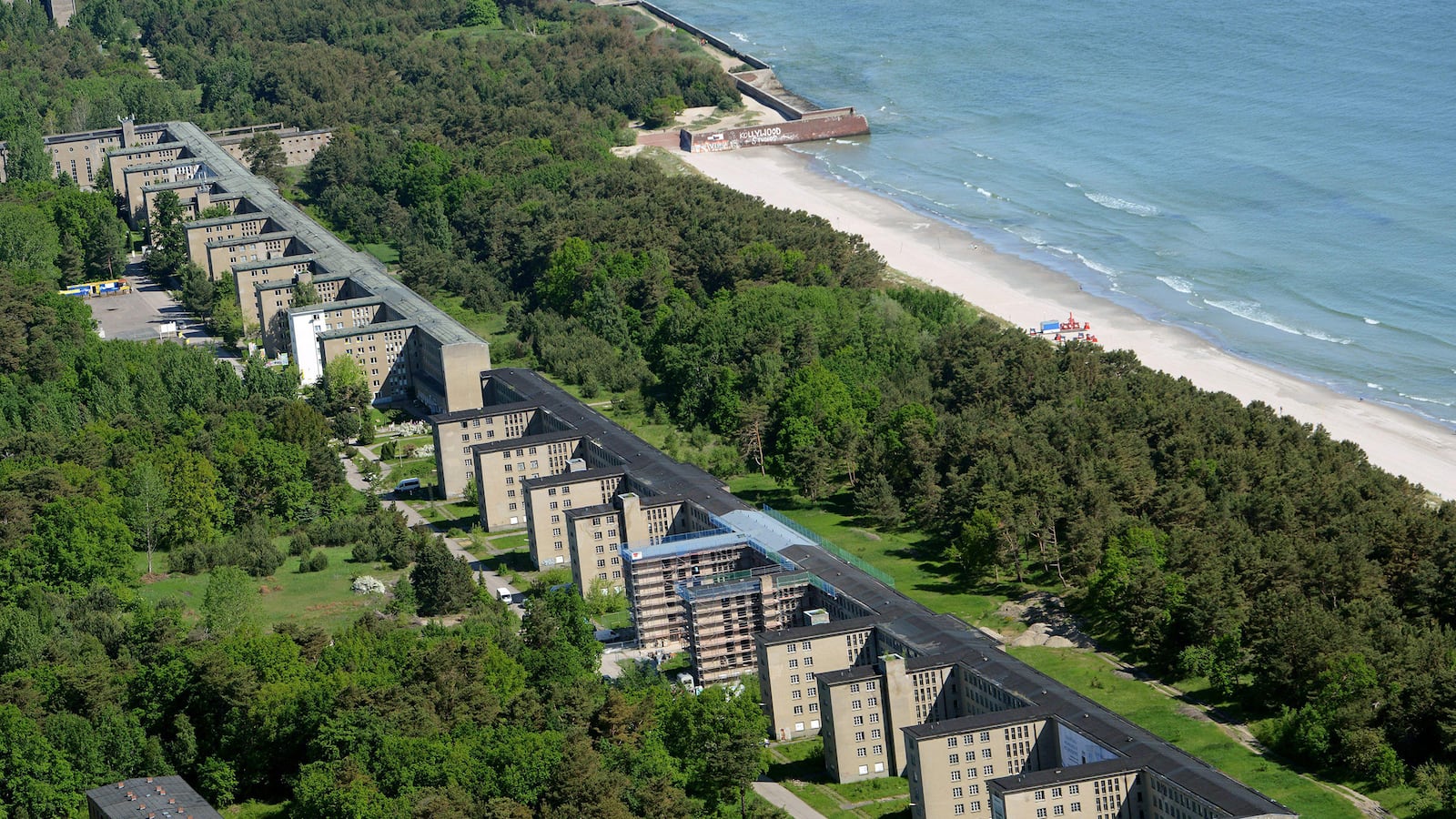Some buildings have a hard time shaking their past, and when it comes to architectural relics from the Third Reich, the past becomes even harder to shake.
Plans to renovate a former vacation home for Nazi party members, known as “The Colossus of Prora,” have sparked much controversy in Germany as to whether buildings tied to Nazi Germany should be left to rot, rather than be turned into opportunities for growth and development.
Located north of Berlin, on the island of Rügen, Prora’s buildings—spanning 4.5km in all—were part of the Kraft durch Freude, Germany’s “Strength Through Joy” program, a large state-operated leisure organization in Nazi Germany that was set up to promote the advantage of National Socialism.
Strength through Joy, or KDF, as it was referred to at the time, became the world’s largest tourism operator in the 1930s.
KDF’s intention was to bridge the class divide by making middle-class leisure activities available to the masses. This was underscored by having cruises with passengers of mixed classes and having them, regardless of social status, draw lots for allocation of cabin. They were also Nazi sympathizers or party members and their families.
In the aftermath of World War II, Prora fell under control of the GDR, where it began to deteriorate.
In the last 10 years, the sprawling resort has become more appealing to architects and developers, all interested in transforming the abandoned space into hotels and apartments, and in a way, restoring it back to original purpose—a resort.
Germany’s economy is stable and the property market is booming. But, it’s not the economic incentives and benefits that trouble opponents. They view renovations of building, like Prora, as also fulfilling the Third Reich’s initial plan to turn the colossus into a massive tourism hub.
This may be because developers have been outspoken about praising the original project’s design, which was chosen by Hitler, himself, and is still recognized to this day for its “award-winning architecture.”
Jurgen Rostock, the co-founder for the Prora documentation center, said, “These are not harmless buildings. The original purpose for Hitler was the construction of [a resort] in preparation for the war to come.”
Surely darker things lurked in or outside of Germany than Hitler’s equivalent of Cancun. But the twisted memory of a Nazi resort persists in haunting a nation despite the strides it has made in recovering from its tumultuous past. Since renovations began in 2012, Prora has continued to be a subject of debate and much criticism.
Does Prora somehow stand in defiance of Germany’s recovery and progress from separating itself from its painful past? Or is it an opportunity—not only for economic growth—but a chance for Germans to completely embody Vergangenheitsbewältigung—the German word for how the country should come to terms with its dark past.
Others see it as a pure business transaction, since Germany offers tax benefits for the purchase of historic real estate, which includes former Nazi buildings. But for developers to qualify for tax breaks with buildings like Prora, they have to retain the look created by Hitler's architects. This makes the renovation seem more like a resurrection of Nazi pride for some, while others view at as fiscally logical.
Axel Bering and Michael Jacobi, the main investors behind the Prora project, claim they could not care less about a building once being dedicated to Hitler. Bering, who is from Denmark, was drawn to Prora because it reminded him of his childhood vacations in Denmark—the white sand and the Baltic breeze.
He and his partner, Michael Jacobi, both confess that because they had to comply with German regulations, their investment carries some Third Reich architecture qualities. They did, however, add a balcony, but otherwise they see Prora as a nice beach town and a solid investment. After all, the memory of World War II will somehow always haunt Germany and its residents, whether Aryan ghosts are spotted in the corridors of Prora, or not.





